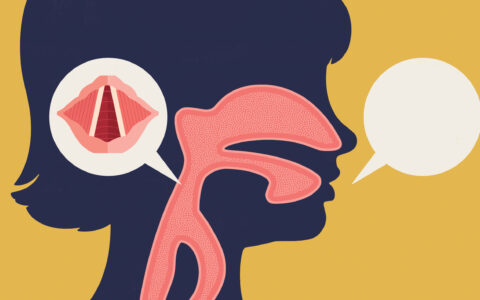Non-flaccid facial paralysis may occur after a nerve injury, infection or Bell’s palsy, leaving the patient with facial anomalies such as paralysis and involuntary muscle movement.
These involuntary muscle movements, known as synkinesis, have been associated with a diminished quality of life among those affected.
A study led by Vanderbilt University Medical Center researchers examined the relationship between a patient’s mental health status and self-reports about the severity of their condition. They found individuals with mental health issues were more likely to believe their synkinesis was severe than mentally healthier patients.
“Our study affirms that depression plays a greater role in the patient’s assessment of their symptoms,” said facial plastic surgeon Shiayin Yang, M.D., principal investigator on the study.
“I think the important takeaway is for clinicians to avoid solely relying on patient appearances or clinical measures. We need to realize that if the patient is depressed, they’re going to feel worse about their symptoms.”
Synkinesis Presentation
Estimates of synkinesis vary widely, but most show that it occurs in 55-to-78 percent of cases following facial palsy. Treatments include facial retraining, selective neurectomy, selective myectomy, or chemodenervation through botulinum toxin, including electromyography-guided onabotulinumtoxin A injections.
“The classic presentation of facial paralysis is when the nerves are damaged and the face doesn’t move,” said Yang, who teamed with first author Elizabeth S. Longino, M.D., a VUMC resident, on the investigation.
“This study works in part to bring attention to the second classification of facial paralysis, which is what we call non-flaccid facial paralysis. Synkinesis is one of the presentations, where your face is moving abnormally because the nerve has healed but abnormal pathways have formed.”
Impact of Depression
The literature shows the significant degree to which quality-of-life is affected by facial paralysis. Several studies have noted this phenomenon, with one demonstrating increased incidence of depression within the first two years of facial paralysis.
“We need to realize that if the patient is depressed, they’re going to feel worse about their symptoms.”
In addition, depression and quality-of-life scores are linked with body dysmorphia in some patients. Yang says that because patients with mental health disorders may have had more adverse experiences with the healthcare system, their patient-reported outcome measures could have some negative bias compared with the control population.
“I kept seeing it over and over again, the anxiety that patients faced when viewing themselves,” Yang said. “It really had a profound impact on their mental health, not being able to address the progress they had made because they were focused on the parts that had not been restored to normal.”
Perception-Depression Link
The goal of the Vanderbilt study was to evaluate how a mood disorder can affect the perception of synkinesis among patients who have experienced non-flaccid facial paralysis. The majority of participants were female (91 out of 100), and 15 to 20 percent had a prior history of mental health disorders. The patient-reported outcome measurements were taken prior to treatment for synkinesis and again four weeks after treatment.
To measure the patient’s perception of their synkinesis, the researchers had them take a synkinesis assessment questionnaire and undergo the Facial Clinometric Evaluation (FaCE) to get quality-of-life scores. Higher outcomes on the questionnaire and lower FaCE totals signify worse perceptions about the synkinesis.
Researchers found a significant negative correlation between the questionnaire responses and FaCE metrics, with a patient’s perception of severity increasing as their reported quality of life decreased.
Both the Center for Epidemiological Studies Depression Scale and Fear of Negative Appearance Evaluation Scale were used to assess risk for a mental health disorder. The scores suggested that, on average, the study population felt more depression than average individuals. The Depression Scale scores indicated 25.8 percent of patients were “possibly” depressed and 15.7 percent were “probably” depressed.
Analyzing all the results, the investigators found higher synkinesis severity and lower quality-of-life scores were associated with higher rates of depression.
Patient v. Clinician Outcomes
The researchers took a further step by collecting results from surgeons who answered the Synkinesis Assessment Questionnaire and developed FaCE scores for these same patients. They found that the higher the patient’s mental-disorder risk score, the larger the gap between their self-perception and their surgeon’s assessments of the synkinesis.
“We found a divergence when it came to severity,” Yang said. “When patient’s depression and anxiety scores were not high, there was concordance with patient- and physician-graded scales. For those patients who scored higher on the indexes, you start to see marked differences.”
The work demonstrates that a patient’s mental health status is an important factor and should be part of the clinical evaluation.
“When you’re dealing with subjective things, a lot of it has to be qualified in terms of: What does the patient think?” Yang added. “Ultimately, you’re treating the patient, not just the disorder.”




